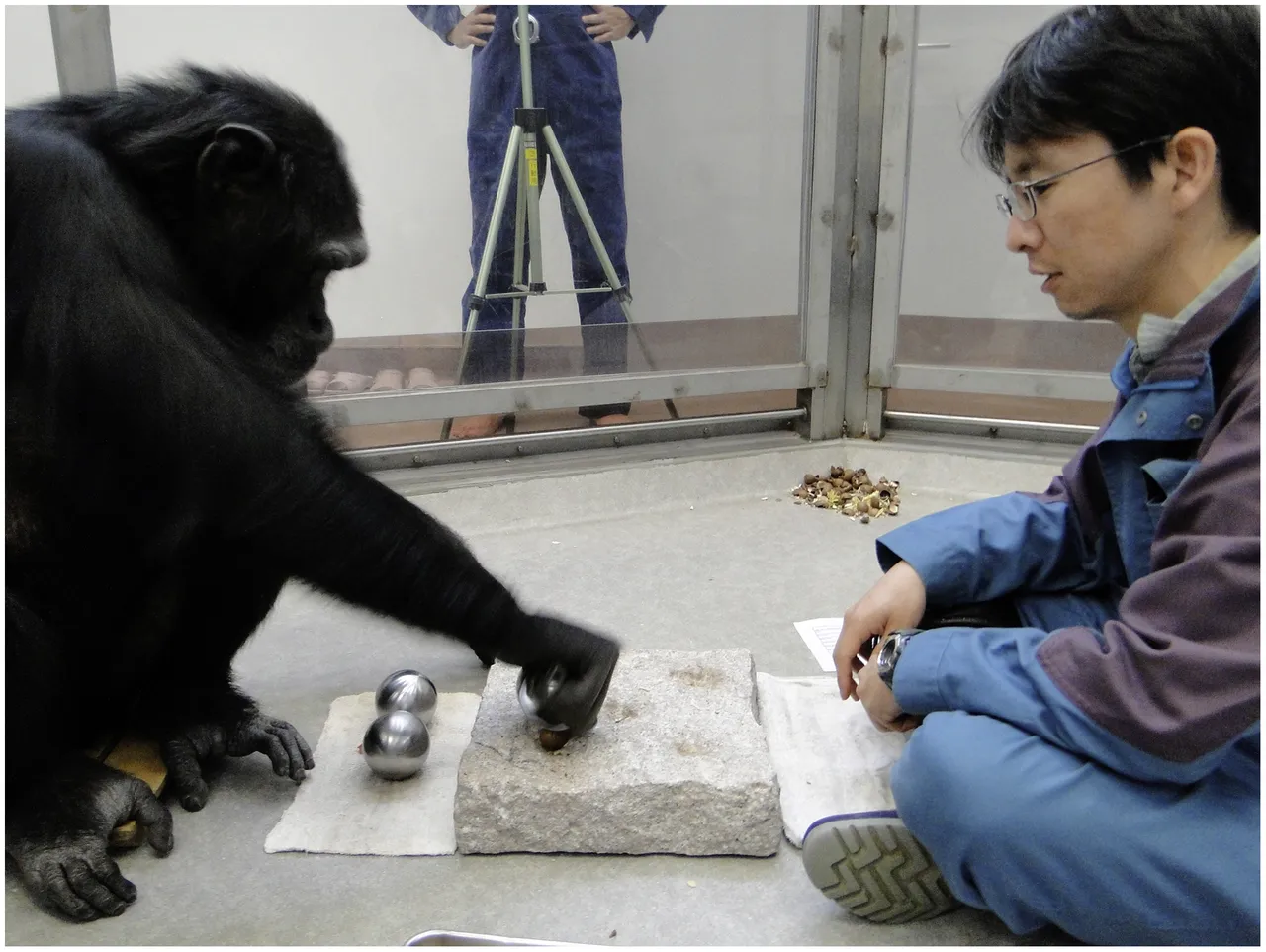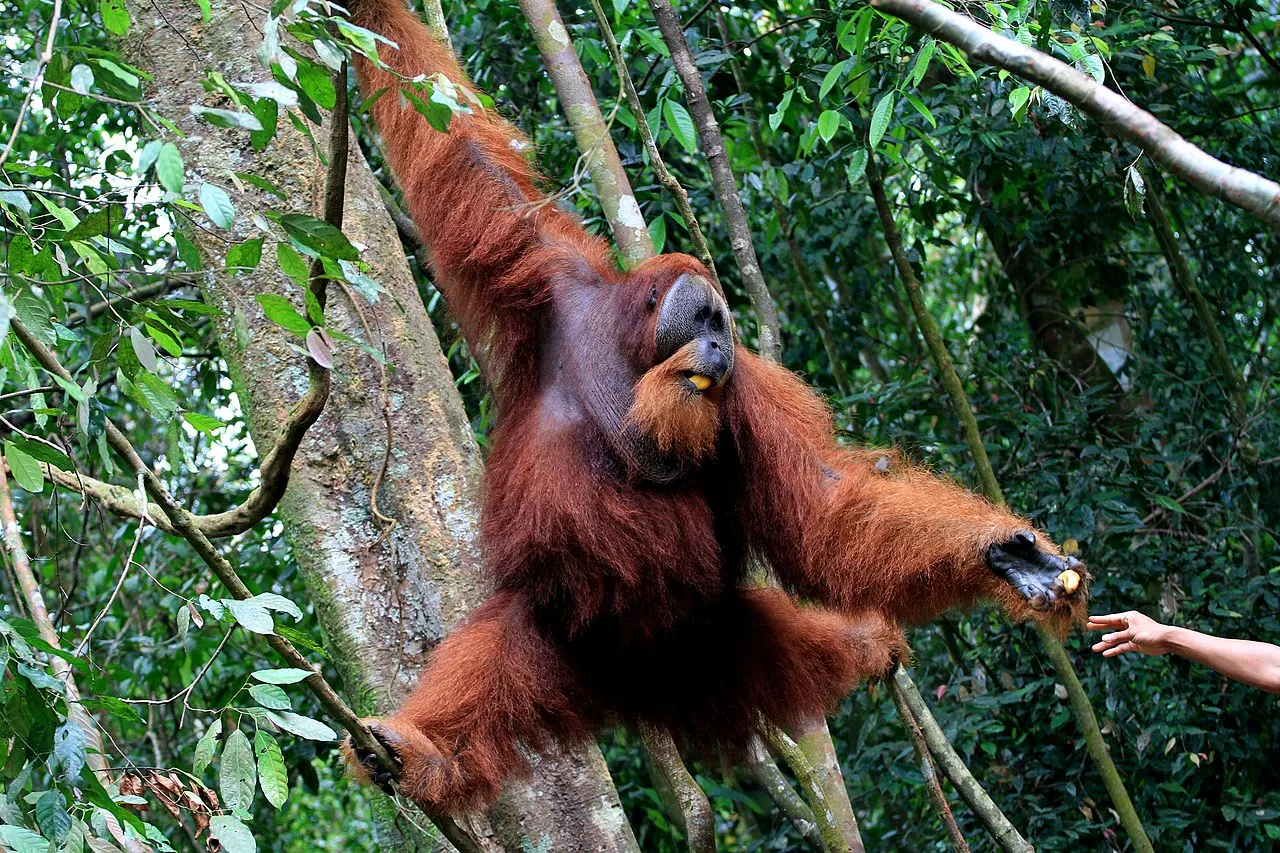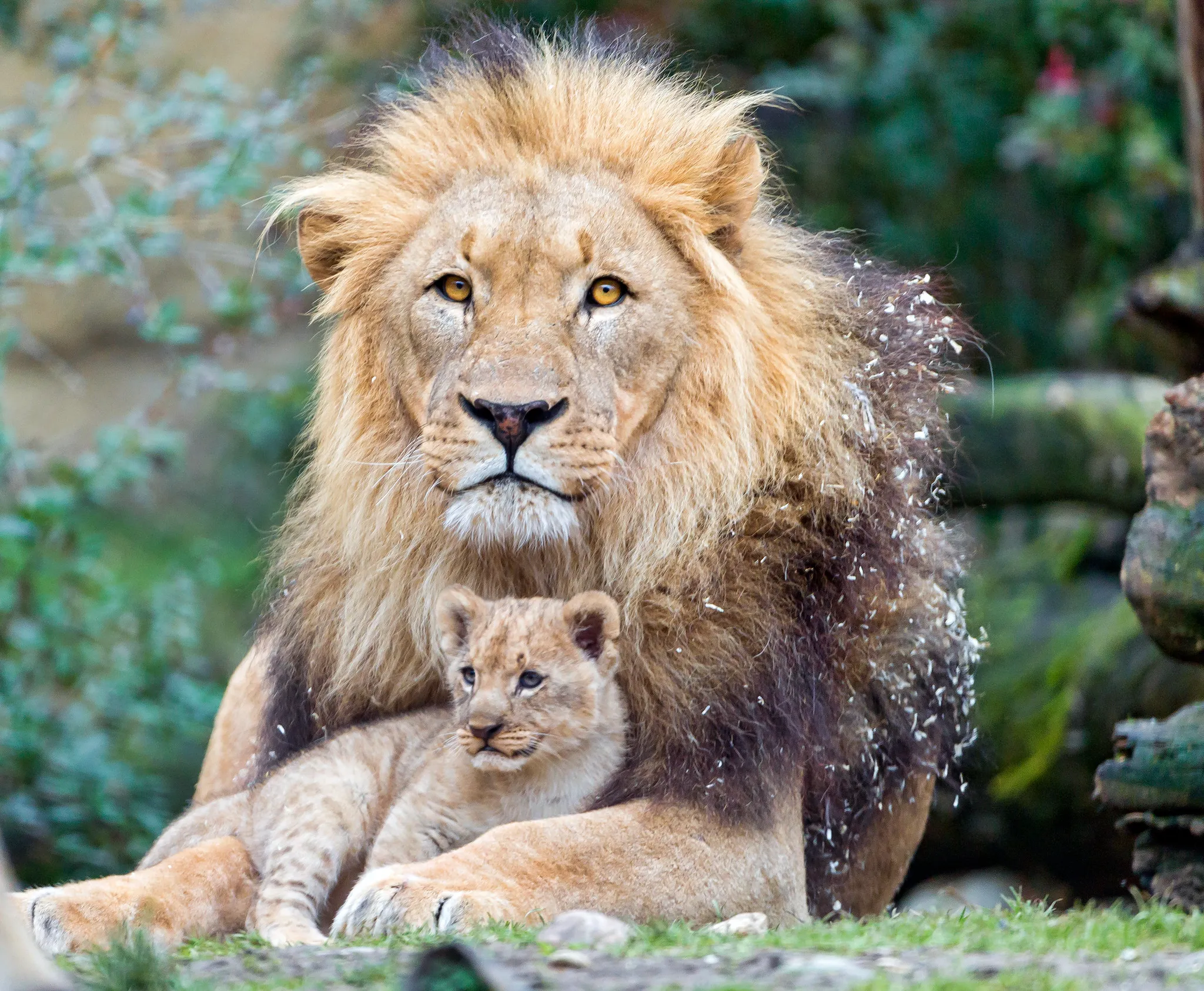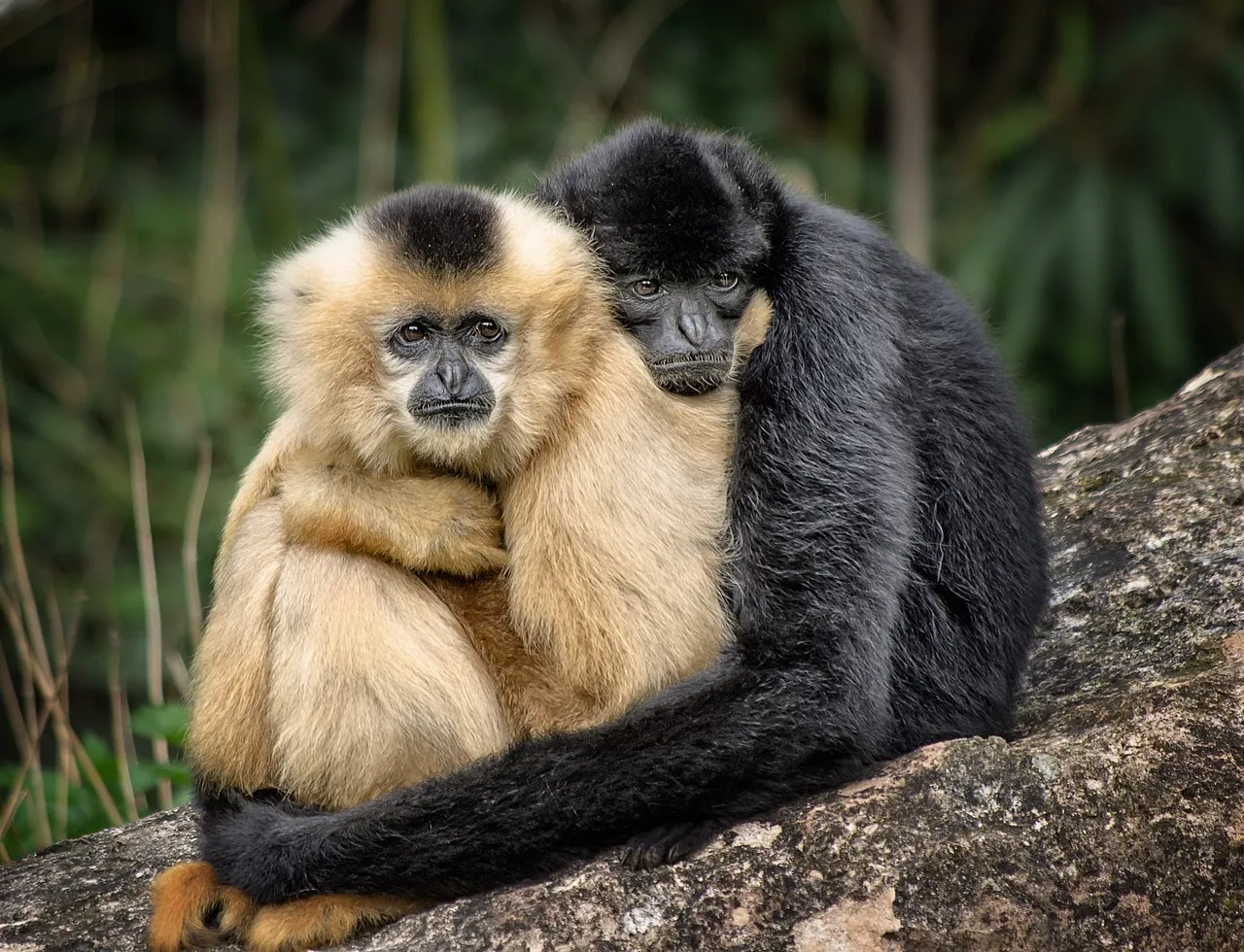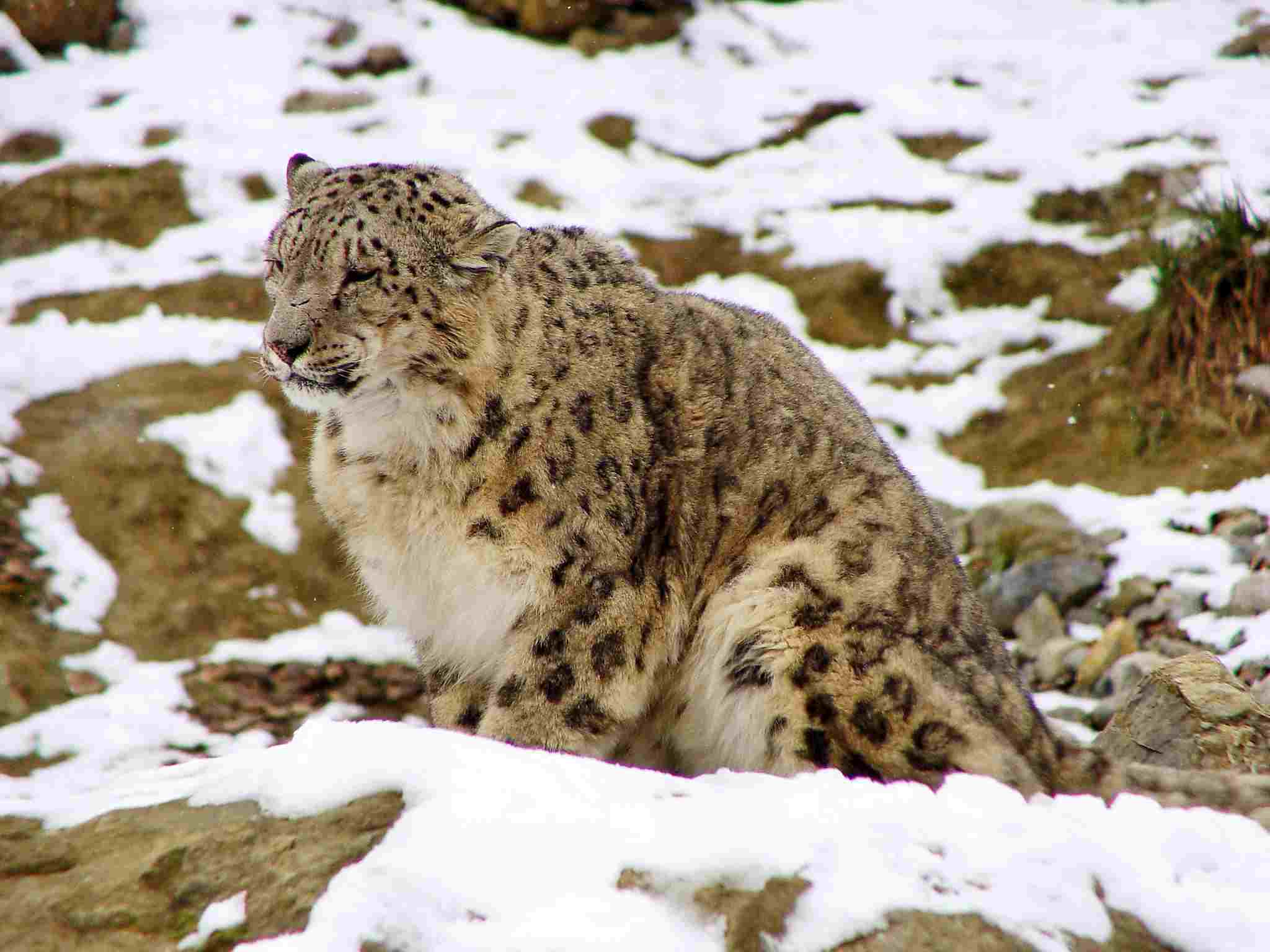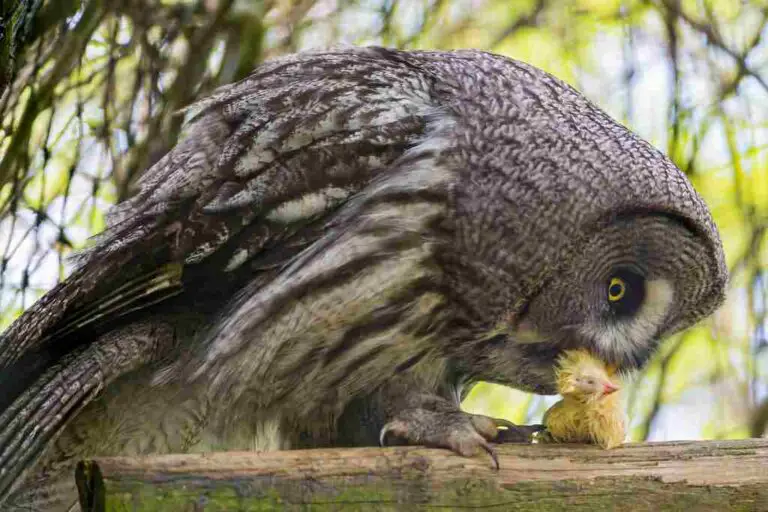Chimpanzee Vs Leopard Fight Prediction, Overall Comparison
The comparison between chimpanzees and leopards unveils a fascinating exploration into the strength, intelligence, and real-life interactions of these two distinct species.
I. Strength:
– While chimpanzees exhibit considerable strength for their size, leopards are proportionally stronger. Leopards showcase their strength by carrying prey up trees using only their jaws and powerful forelimbs, a feat not matched by chimpanzees.
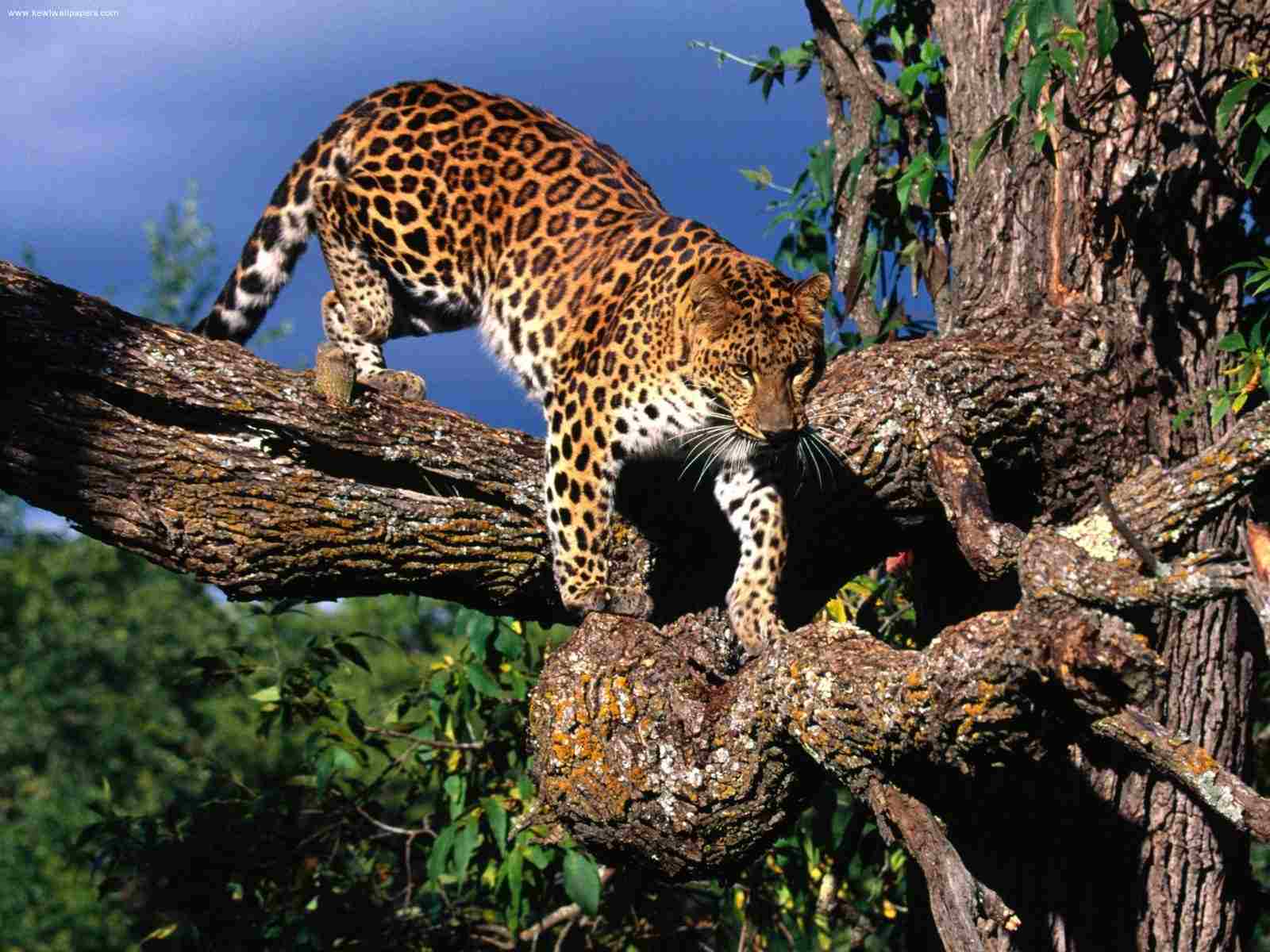
II. Intelligence:
– The intelligence of chimpanzees is well-documented, emphasizing problem-solving skills and complex social behaviors. In contrast, leopards display a different form of intelligence focused on stealth and hunting strategies. Both species exhibit unique cognitive adaptations that suit their respective environments.
III. Real-Life Interactions:
– Scientific observations reveal instances of chimpanzees interacting with leopards. Contrary to assumptions that chimpanzees are afraid of leopards, studies show that chimpanzees have been observed confronting leopards, stealing their kills, and engaging in behaviors that challenge the traditional perception of a prey-predator relationship.
IV. Fight Prediction:
– In a real fight, the outcome would be influenced by several factors, including the specific circumstances of the encounter. While leopards possess superior physical attributes for hunting and ambushing, chimpanzees may exhibit coordinated group behaviors and intelligence to fend off or challenge a leopard.
However on average, a single leopard would overpower and kill a chimpanzee in a fight using its superior speed, agility, and predatory features
V. Scientific Perspectives:
– Scientific evidence supports the notion that chimpanzees are not passive victims of leopard predation. Instances of chimpanzees depriving leopards of kills challenge the traditional understanding of their relationship. The observed behaviors suggest a more nuanced interaction between these species.
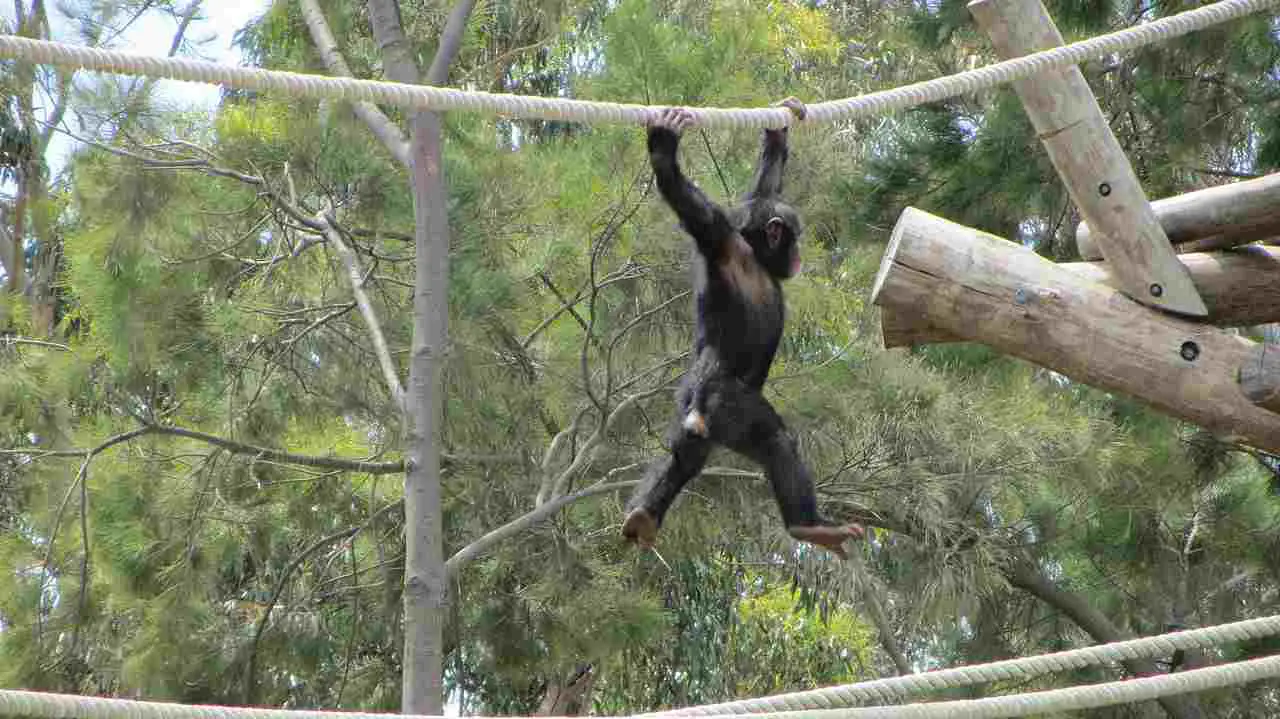
*Details of Comparison
| Criteria | Chimpanzee | Leopard |
| Taxonomy | Primates, Hominidae family |
Carnivora order, Felidae family
|
| Appearance | Coarse black hair, expressive face |
Sleek, golden-yellow coat with rosettes
|
| Size | 3.3-5.6 feet tall (males) | 3.9-6.2 feet long |
| Weight | 90-150 pounds (males) | 66-176 pounds |
| Dentition and Bite Force (PSI) | 1,200 PSI | 600-700 PSI |
| Physical Offensive Advantages | Strength, agility, tool use |
Sharp claws, powerful jaw, stealth
|
| Physical Defensive Advantages | Climbing, group cooperation |
Retractable claws, tree-climbing
|
| Speed | 25 km/h | 58 km/h |
| Agility | Tree-climbing, swift movements |
Agile climbing, swift hunting
|
| Senses | Balanced vision, hearing, touch |
Night vision, acute smell, hearing
|
| Overall Physical Capacity | Versatility, tool usage, cooperation |
Stealth, strength, sensory perception
|
| Habitat Preference | Tropical rainforests, Africa |
Various habitats, Africa, Asia
|
| Tracks | Hand-like footprints, knuckle-walking |
Paw prints, retractable claws
|
| Lifespan | 40-60 years | 12-17 years |
| Mode of Feeding | Omnivorous, tool use |
Carnivorous, ambush tactics
|
| Intelligence | Advanced problem-solving, tool use |
Cunning hunting techniques
|
| Social Behavior | Highly social, complex structure |
Mostly solitary, territorial
|
| Mode of Reproduction | Polygamous, gestation 230 days |
Polygamous, gestation 90-105 days
|
| Parental Behavior | Intensive maternal care |
Protective, cubs learn hunting
|
| Proximity to Human-Inhabited | Forests near settlements |
Adaptable, peri-urban areas
|
| Behavior Toward Humans | Generally wary, rare aggression |
Elusive, avoids direct contact
|
| Danger Posed to Humans | Rare aggression if provoked |
Rare attacks, territorial disputes
|
| Associated Precautions | Habitat protection, education, responsible |
Habitat protection, education, responsible
|
| Conservation Status | Endangered | Near-threatened |
Key Points
Similarities:
-
- Both integral to ecosystems.
- Face conservation threats.
- Proximity to human-inhabited areas.
Differences:
-
- Social structures: Chimpanzees highly social, leopards mostly solitary.
- Ecological roles: Chimpanzees influence plant dispersal, leopards regulate prey populations.
- Conservation statuses: Chimpanzees endangered, leopards near-threatened.
1. Taxonomy:
Chimpanzee (Pan troglodytes):
Kingdom: Animalia
Phylum: Chordata
Class: Mammalia
Order: Primates
Family: Hominidae
Genus: Pan
Species: troglodytes
Leopard (Panthera pardus):
Kingdom: Animalia
Phylum: Chordata
Class: Mammalia
Order: Carnivora
Family: Felidae
Genus: Panthera
Species: pardus
2. Appearance:
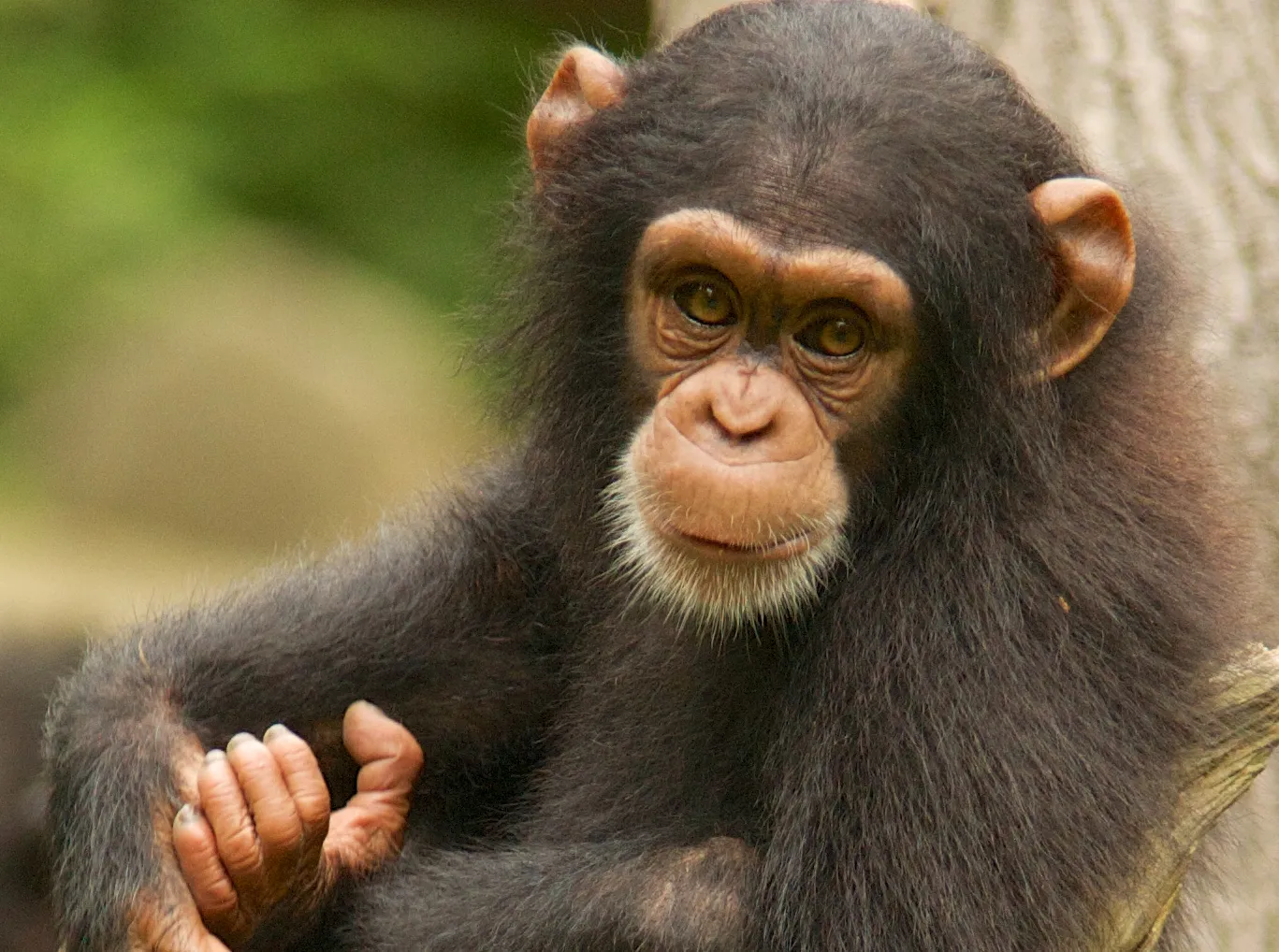
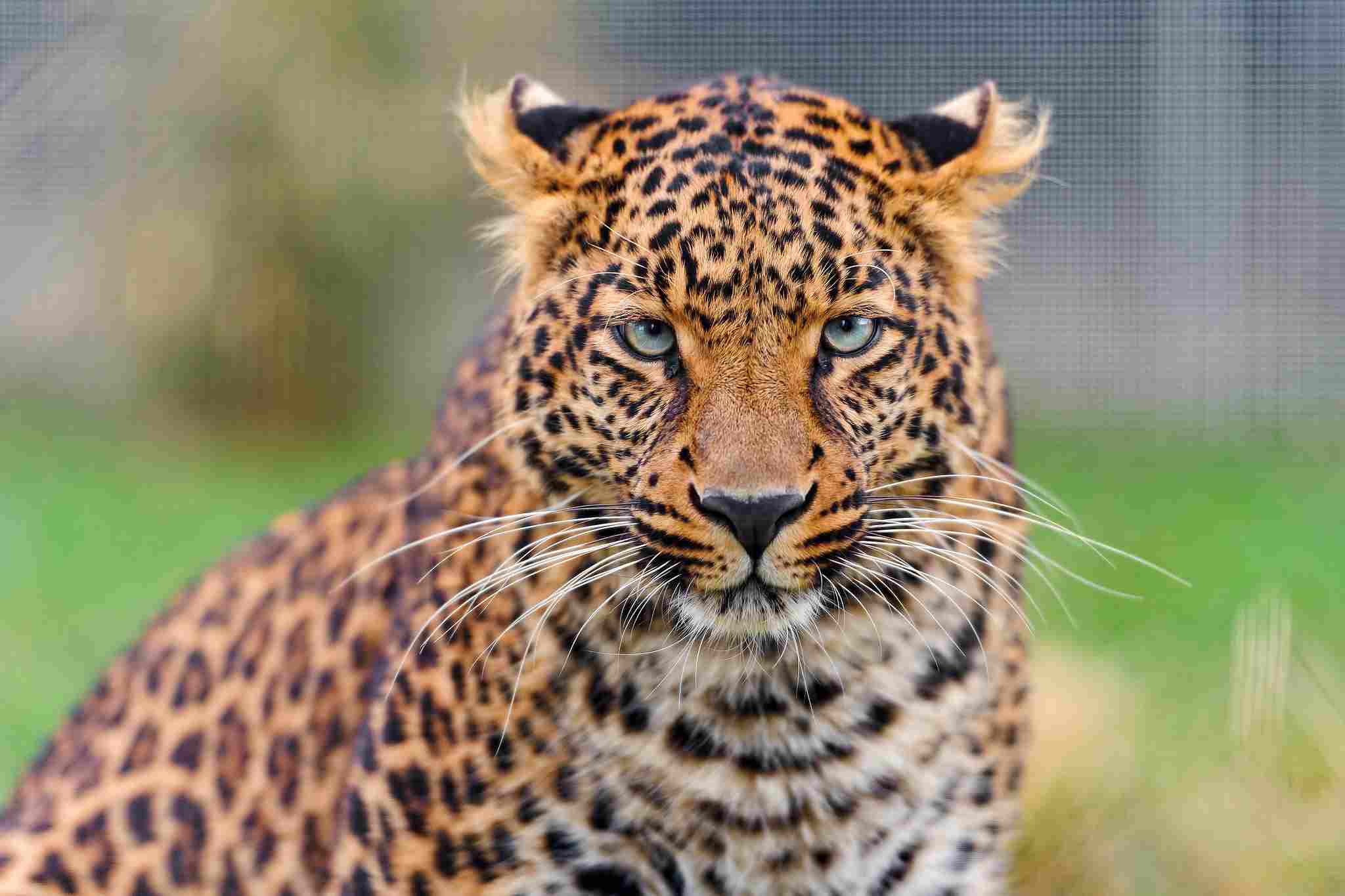
Chimpanzee:
Covered in coarse black hair, with bare face and palms.
Prominent ears, opposable thumbs, and expressive facial features.
Highly dexterous hands for tool use and complex tasks.
Leopard:
Sleek, powerful build with a distinctive golden-yellow coat and black rosettes.
Well-camouflaged for stalking prey in diverse habitats.
Sharp claws and strong jaws for hunting and climbing.
Comparison:
Chimpanzees exhibit more variation in appearance within their species, while leopards have a more standardized coat pattern.
Ecological Implications:
Chimpanzee appearance aids in arboreal locomotion and complex social interactions.
Leopard appearance supports stealthy hunting and survival in various environments.
3. Size:
Chimpanzee:
Adult males: 3.3 to 5.6 feet tall when standing, weighing 90 to 150 pounds.
Adult females are slightly smaller.
Leopard:
Length ranges from 3.9 to 6.2 feet, with a shoulder height of 1.8 to 2.3 feet.
Males typically larger than females.
Comparison:
Leopards are generally longer and more streamlined, while chimpanzees have a more robust, upright posture.
Ecological Implications:
Size influences foraging strategies, with leopards relying on stealth, and chimpanzees utilizing a combination of ground and tree-based activities.
4. Weight:
Chimpanzee:
Adult males: 90 to 150 pounds.
Adult females: Slightly smaller, around 70 to 100 pounds.
Leopard:
66 to 176 pounds, with males being larger than females.
Comparison:
Leopards generally have a broader weight range than chimpanzees, with the latter being more consistent in size.
Ecological Implications:
Weight influences hunting strategies, with leopards relying on ambush and strength, while chimpanzees use agility and cooperation to catch prey or forage.
5. Dentition and Bite Force (PSI – Pounds per Square Inch):
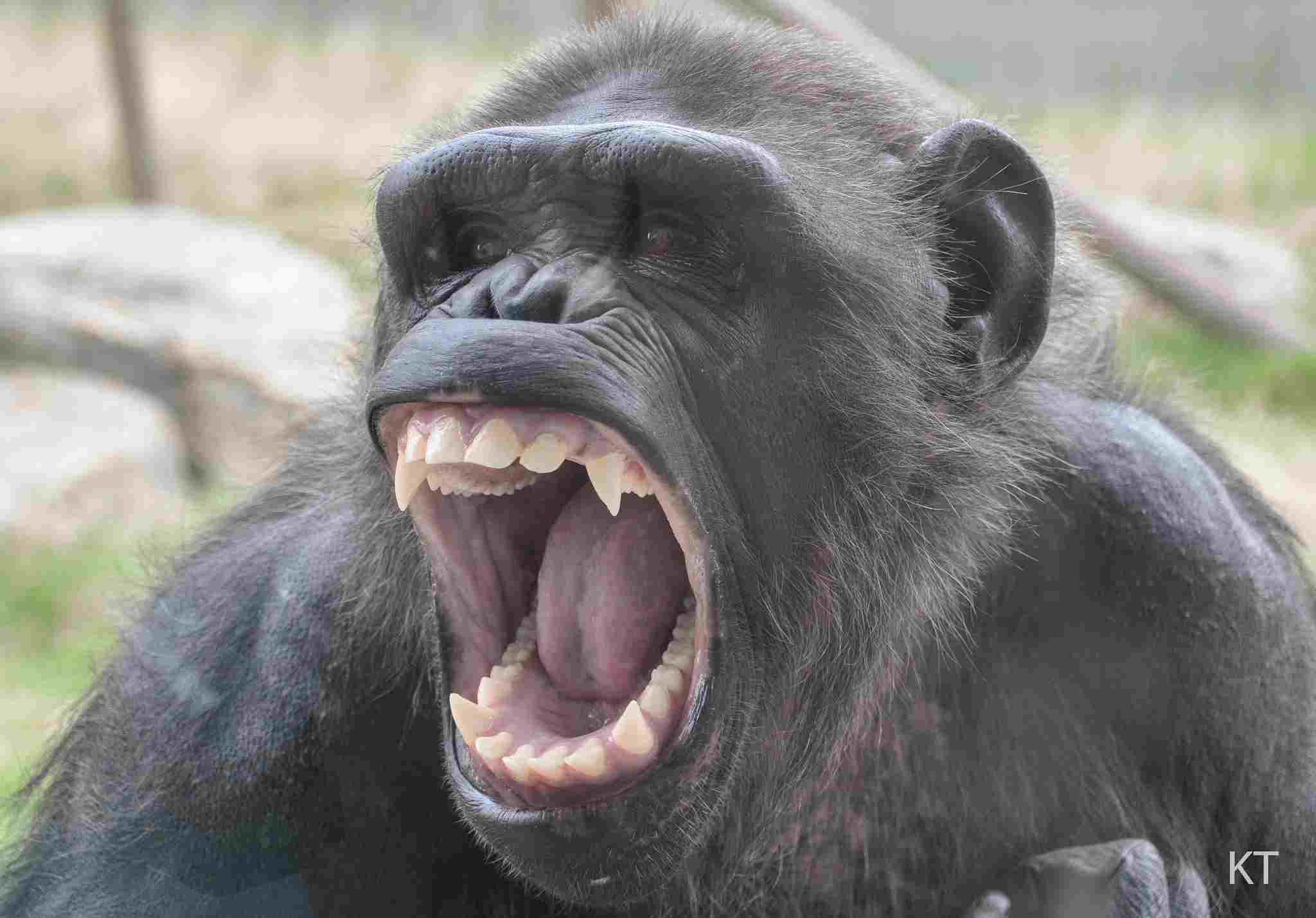

Chimpanzee:
Sharp canine teeth for hunting and display.
Bite force estimated around 1,200 PSI.
Leopard:
Powerful jaws and sharp, retractable claws.
Bite force around 600 to 700 PSI.
Comparison:
Chimpanzees have a stronger bite force, reflecting their reliance on various foods and potential need for self-defense.
Ecological Implications:
Leopard dentition and bite force are adapted for killing and consuming prey, while chimpanzees’ dental structure supports a more omnivorous diet.
6. Physical Offensive Advantages:
Chimpanzee:
Exceptional strength and agility for climbing and hunting.
Use of tools as weapons, such as sticks for hunting or defense.
Leopard:
Powerful jaw and sharp claws for efficient prey capture.
Silent stalking and ambush techniques.
Comparison:
While chimpanzees rely on physical strength and tools, leopards employ stealth and powerful natural weaponry for offense.
Ecological Implications:
Chimpanzee offensive abilities contribute to group hunting and protection, enhancing survival in diverse environments.
Leopard offensive skills are specialized for solitary hunting and adapting to various prey.
7. Physical Defensive Advantages:
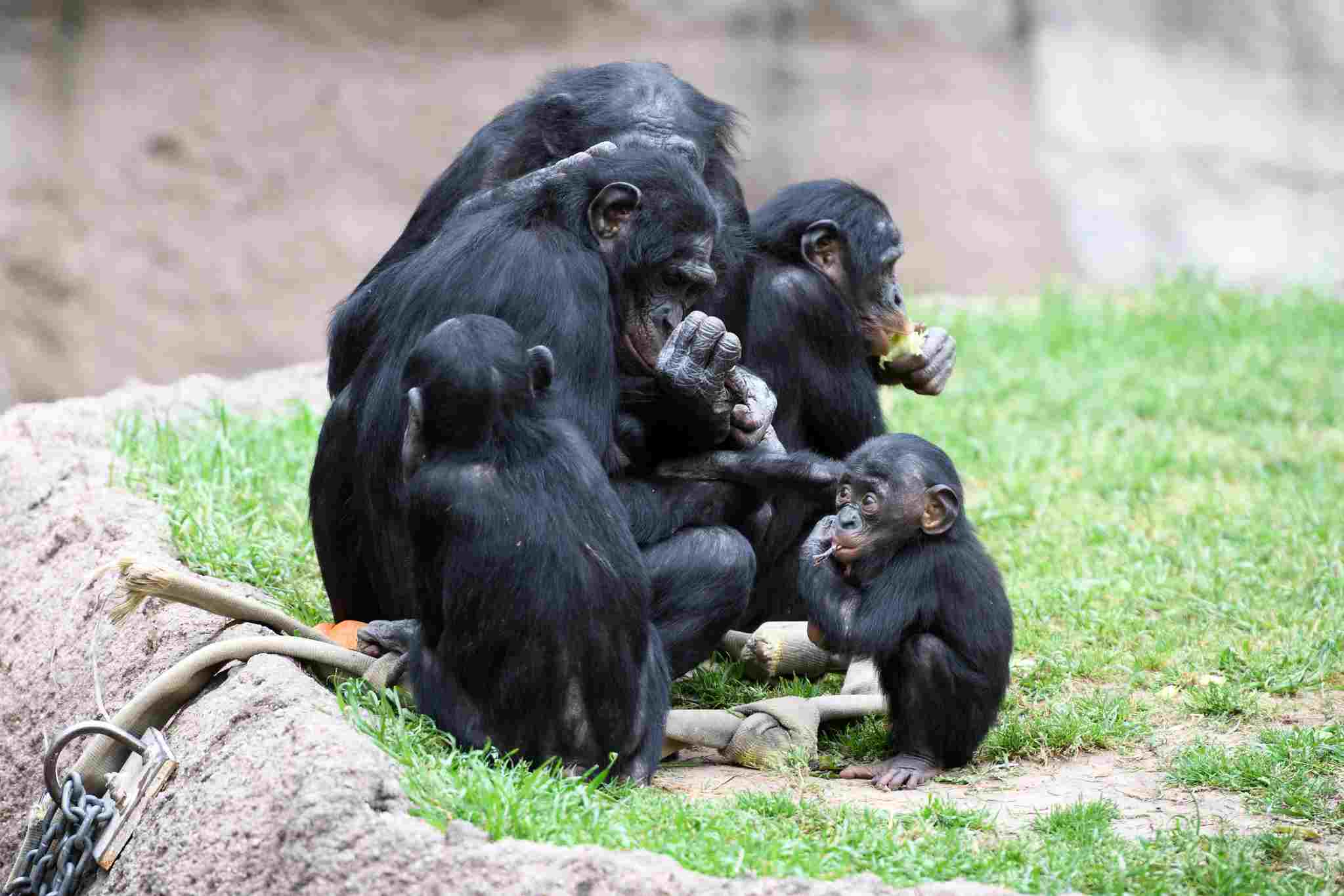

Chimpanzee:
Agile climbing abilities to escape predators.
Group cohesion and cooperation for defense against larger threats.
Leopard:
Sharp retractable claws and powerful jaws for self-defense.
Tree-climbing as a defensive strategy.
Comparison:
Chimpanzees rely on social structure and agility for defense, whereas leopards use physical adaptations and tree-climbing.
Ecological Implications:
Defensive strategies are vital for both species’ survival, contributing to their roles in their respective ecosystems.
8. Speed (Km/hour or Mile/hour):
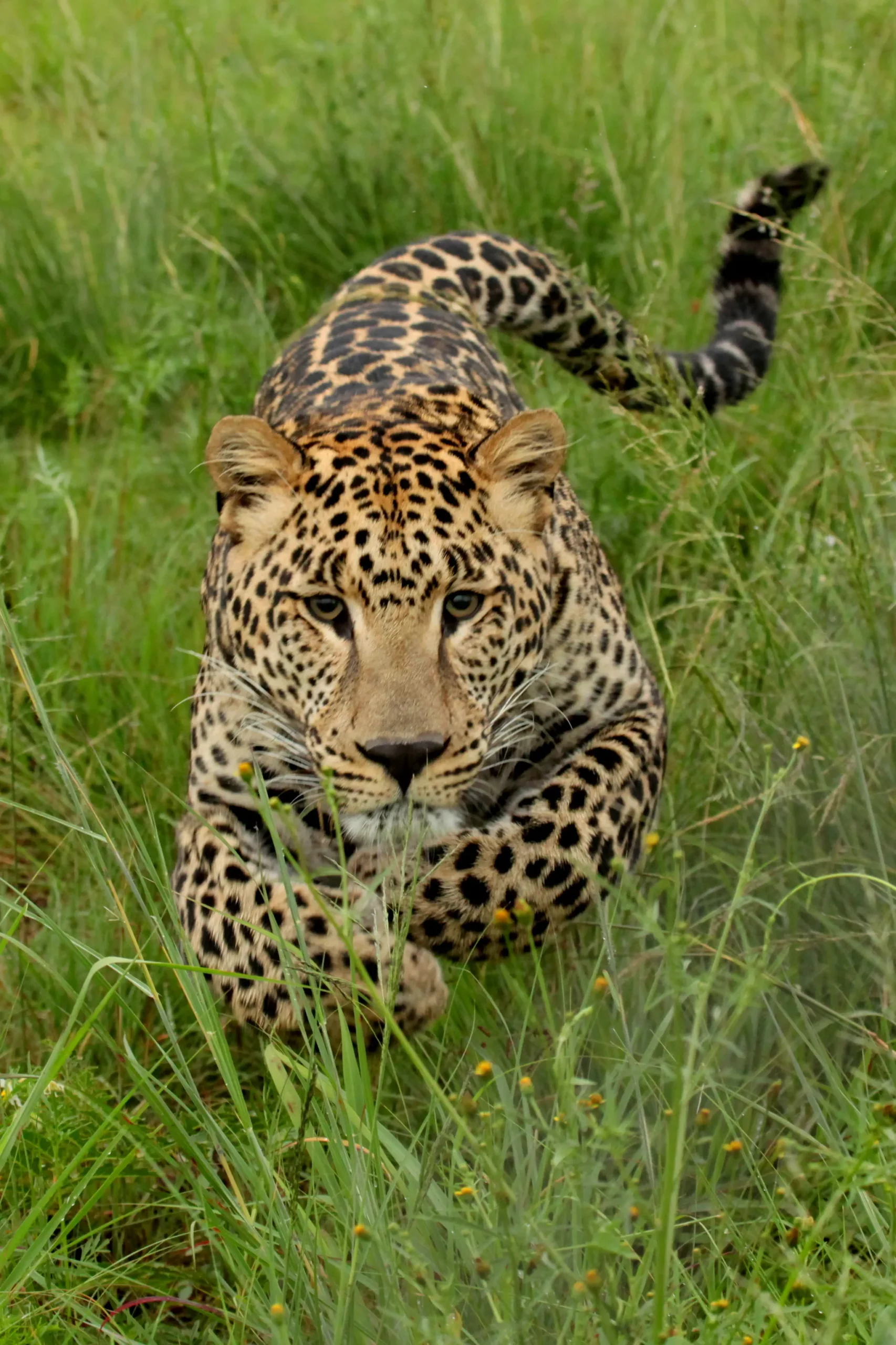
Chimpanzee:
Ground speed of around 25 km/h (15.5 mph).
Leopard:
Sprinting speed of approximately 58 km/h (36 mph).
Comparison:
Leopards are significantly faster runners than chimpanzees.
Ecological Implications:
Leopard speed aids in successful hunts and evasion of predators, while chimpanzees rely on agility and teamwork for mobility.
9. Agility:
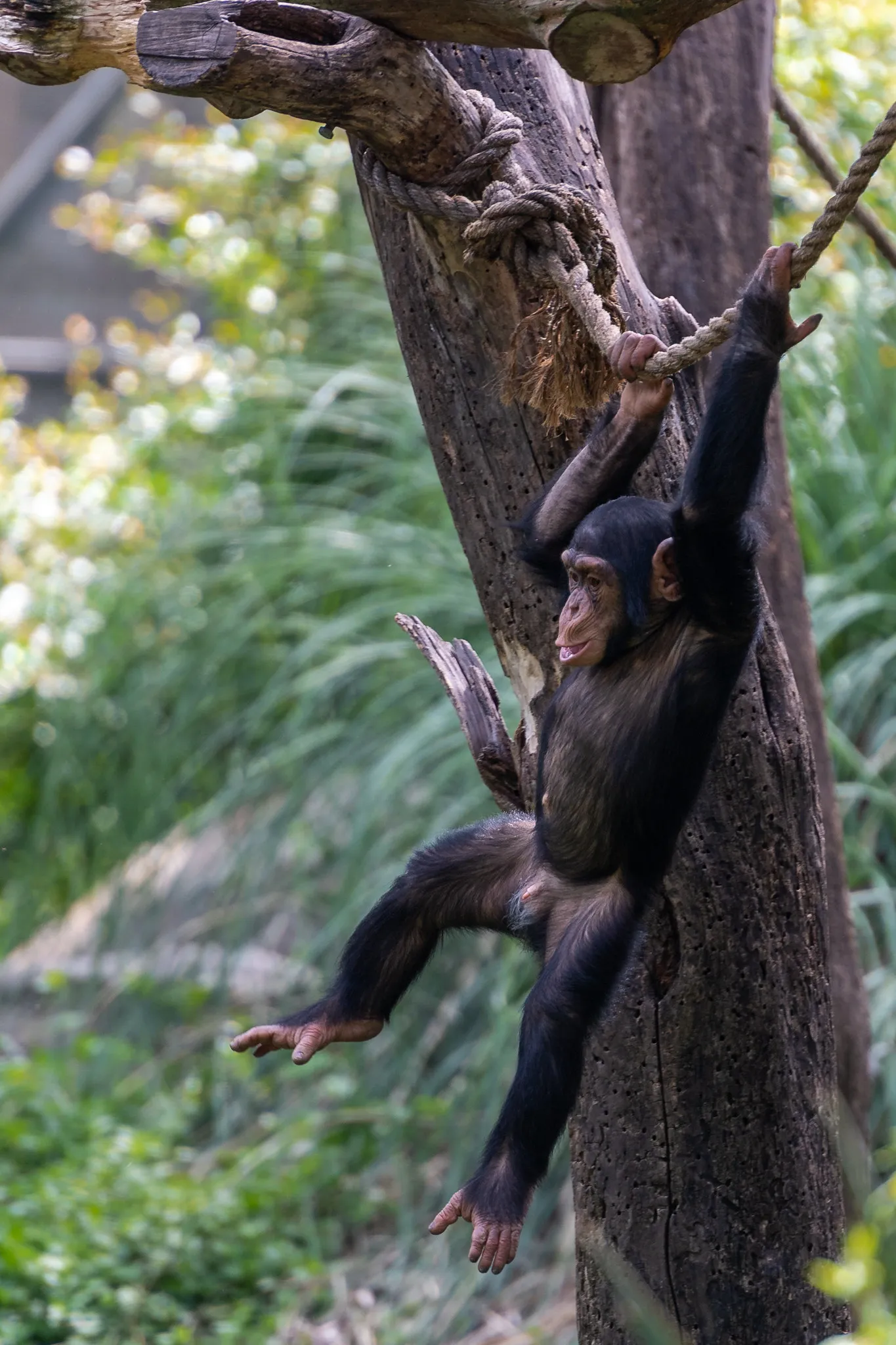
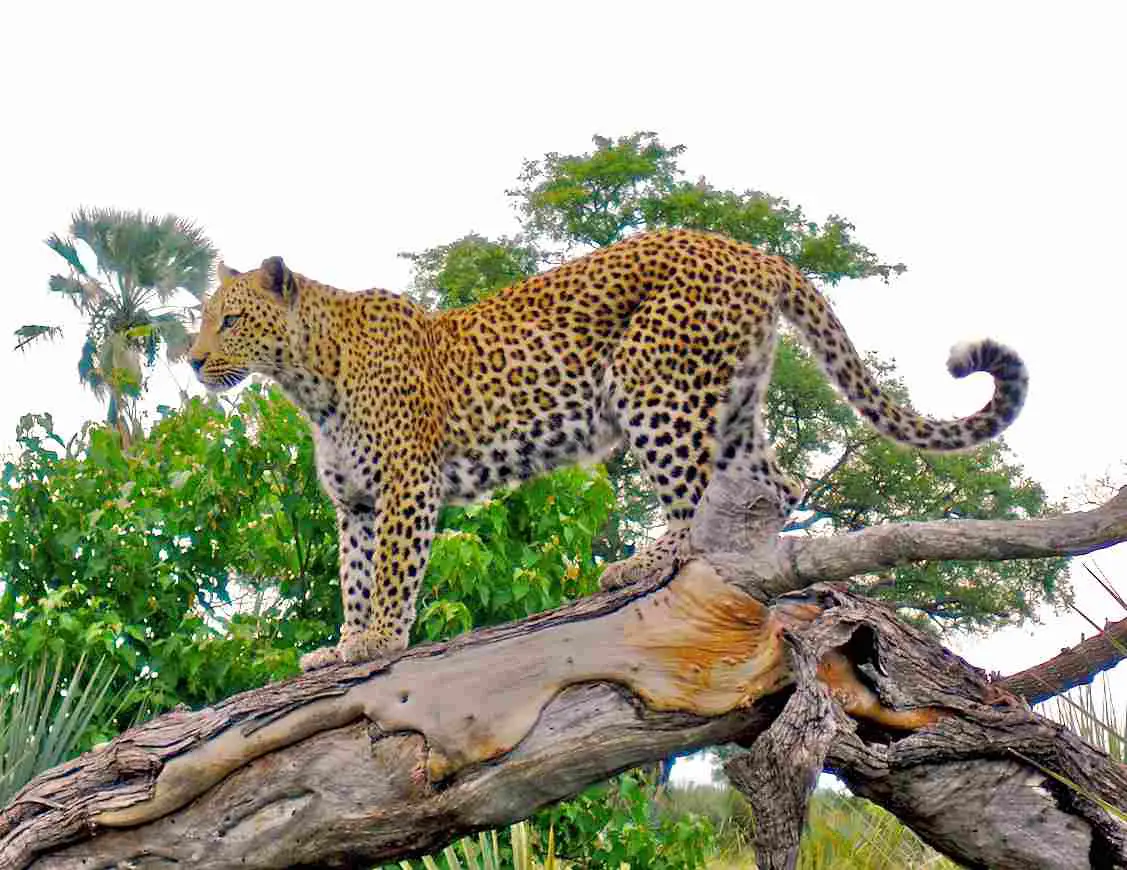
Chimpanzee:
Exceptional tree-climbing agility, swinging effortlessly between branches.
Quick and nimble movements on the ground.
Leopard:
Agile and adept at climbing trees.
Swift and precise movements during hunting.
Comparison:
Both species display remarkable agility, adapted to their specific habitats and lifestyles.
Ecological Implications:
Agility is crucial for navigating diverse environments, obtaining food, and avoiding predators or threats for both chimpanzees and leopards.
10. Senses:
Chimpanzee:
Highly developed vision, adapted for both diurnal and nocturnal activities.
Excellent sense of hearing and a well-developed sense of touch.
Leopard:
Exceptional night vision for nocturnal hunting.
Acute sense of smell and hearing.
Comparison:
Chimpanzees have a more balanced set of senses, while leopards excel in night vision and smell.
Ecological Implications:
Adaptation of senses contributes to efficient foraging, hunting, and communication in their respective environments.
11. Overall Physical Capacity:
Chimpanzee:
Versatile physical abilities, including climbing, running, and tool usage.
Cooperative behaviors and problem-solving skills.
Leopard:
Powerful build, specialized for stealthy hunting and climbing.
Strong sensory perception for effective predation.
Comparison:
Chimpanzees showcase a broader range of physical capacities, emphasizing cooperation and problem-solving, whereas leopards are specialized for solitary hunting.
Ecological Implications:
Diverse physical capacities contribute to the adaptive success of each species in their respective ecological niches.
12. Habitat Preference(s) and Geographic Region:
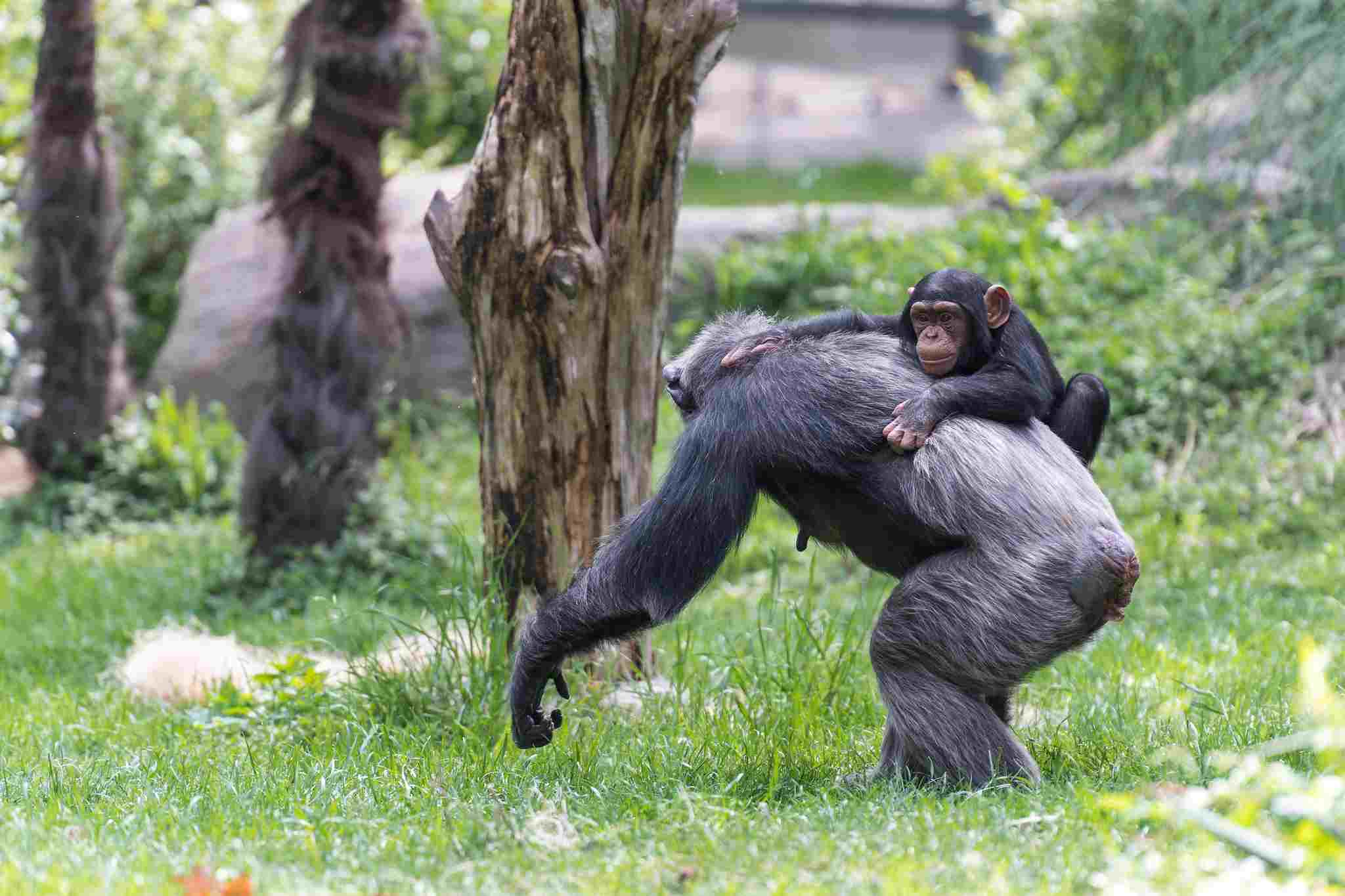
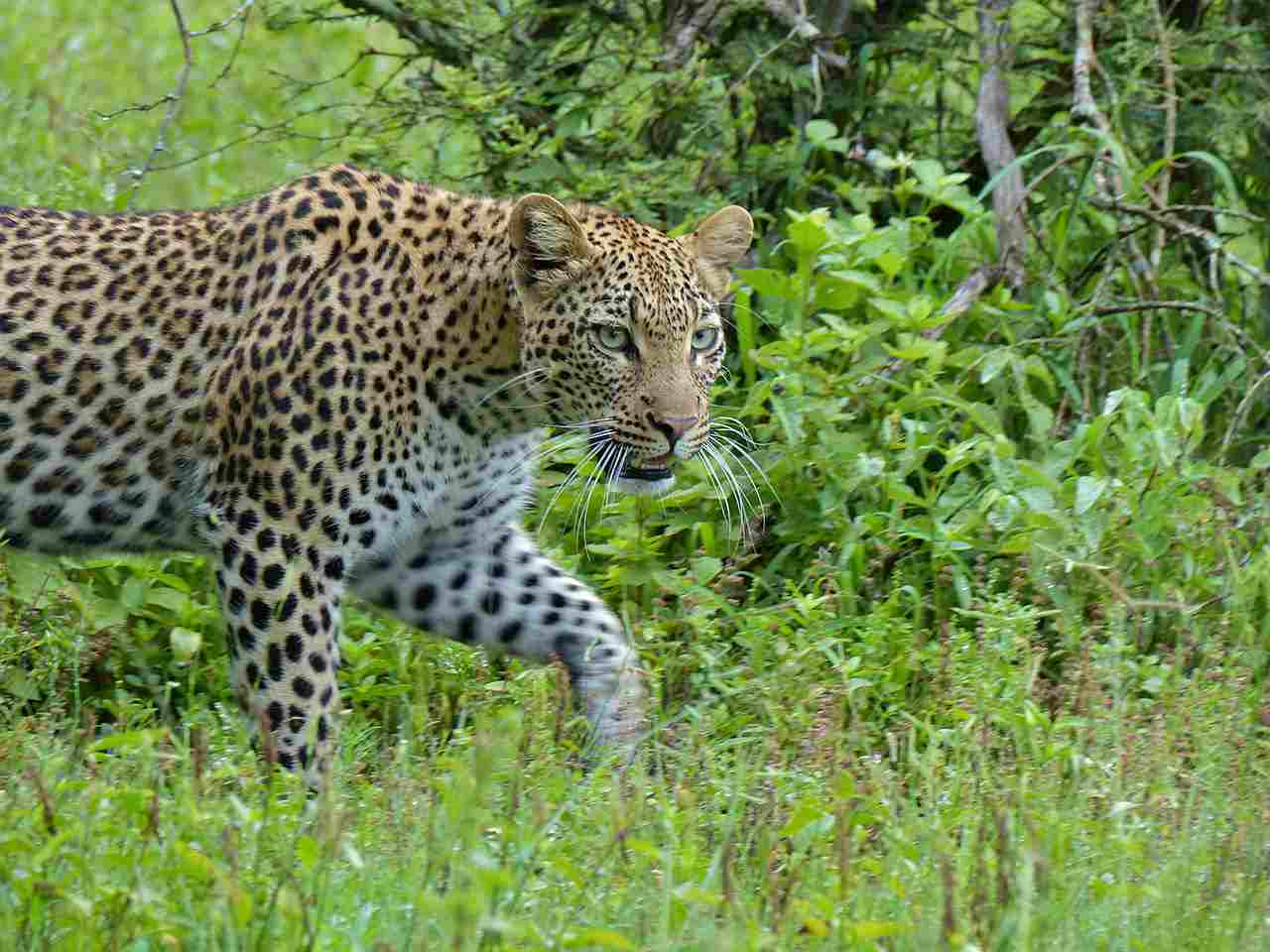
Chimpanzee:
Dense tropical rainforests, savannas, and woodlands of Africa.
Highly adaptable to various environments.
Leopard:
Wide range of habitats including forests, grasslands, and mountains.
Found in Africa and parts of Asia.
Comparison:
While there is some overlap in habitat preference, chimpanzees are more closely associated with dense forests, and leopards exhibit a broader habitat range.
Ecological Implications:
Habitat preferences influence the ecological roles each species plays and their interactions within ecosystems.
13. Tracks:
Chimpanzee:
Hand-like footprints with opposable big toes.
Often show signs of knuckle-walking on the ground.
Leopard:
Distinctive paw prints with retractable claws.
Usually exhibit a direct, purposeful walk.
Comparison:
Chimpanzee tracks reveal characteristics of both hand and foot, reflecting their arboreal and terrestrial locomotion. Leopard tracks emphasize their feline structure.
Ecological Implications:
Tracking provides insights into the movements, behavior, and distribution of these species, aiding in ecological studies and conservation efforts.
14. Lifespan:
Chimpanzee:
In the wild, lifespan ranges from 40 to 60 years.
Influenced by various factors, including predation and disease.
Leopard:
Typically, a lifespan of 12 to 17 years in the wild.
Threats include territorial conflicts and human activities.
Comparison:
Chimpanzees generally have a longer lifespan than leopards.
Ecological Implications:
Lifespan affects population dynamics, reproductive strategies, and ecological roles within their respective ecosystems.
15. Mode of Feeding:
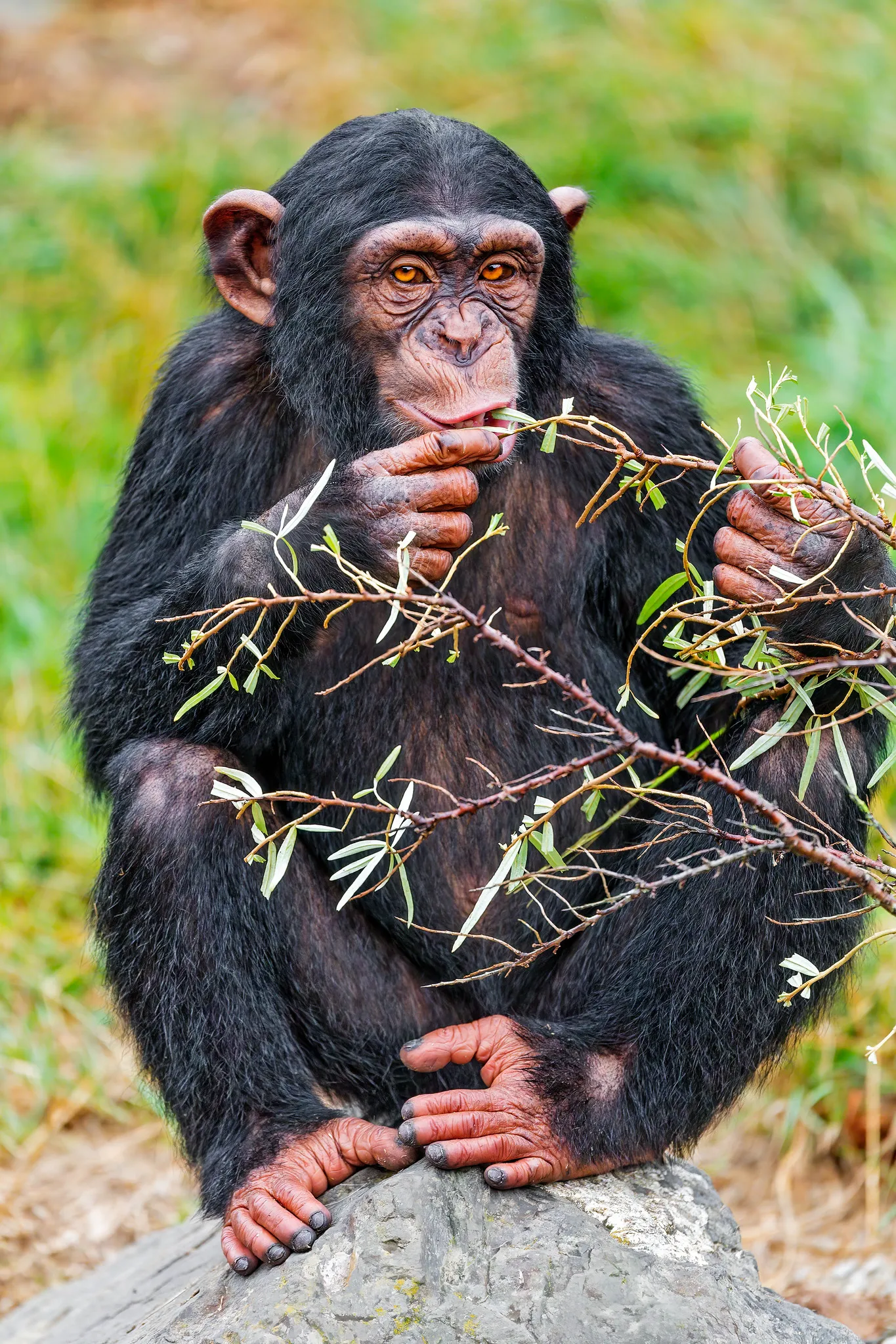
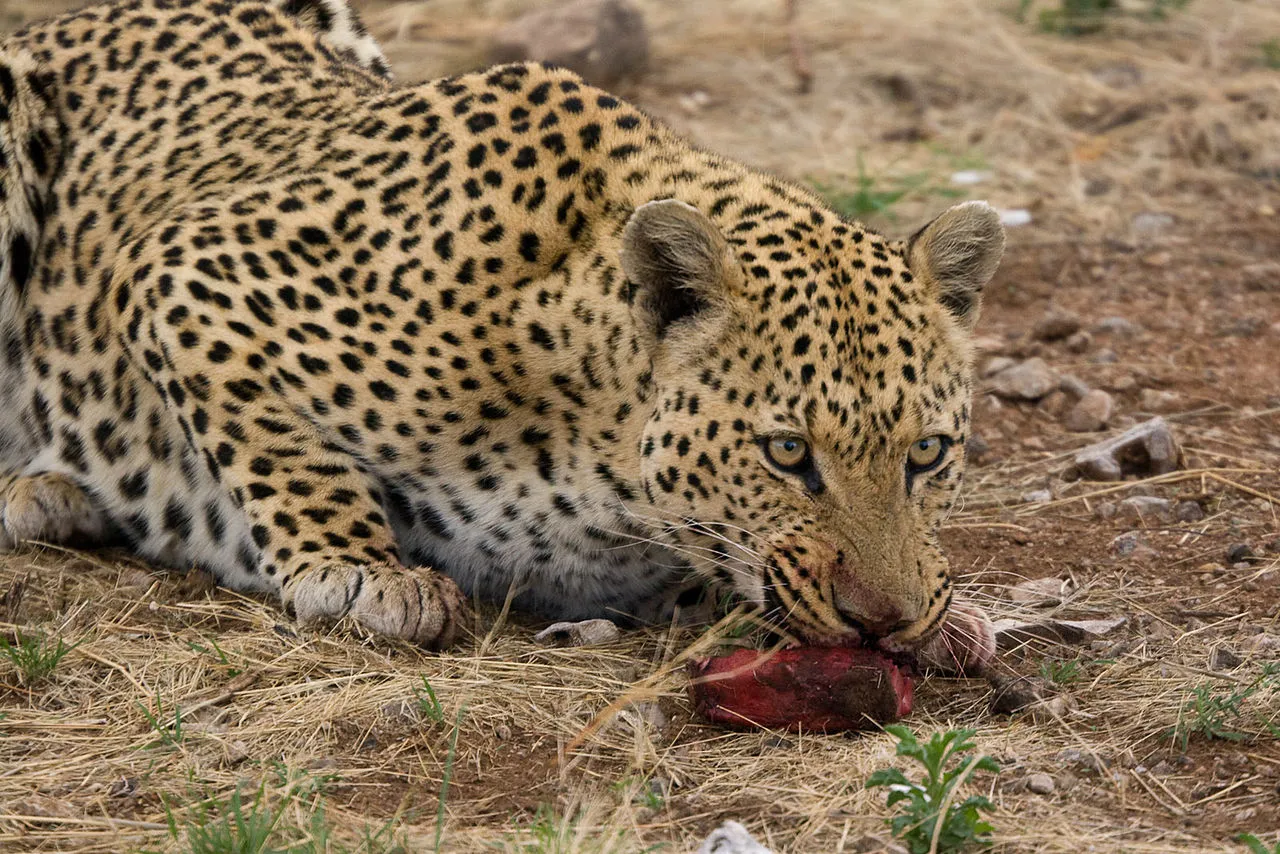
Chimpanzee:
Omnivorous diet consisting of fruits, leaves, insects, and occasionally small mammals.
Employ tools for hunting and extracting termites.
Leopard:
Carnivorous diet primarily consisting of mammals like impalas and deer.
Highly skilled hunters with a preference for ambush tactics.
Comparison:
Chimpanzees are omnivores with a varied diet, while leopards are specialized carnivores.
Ecological Implications:
Varied feeding strategies contribute to the ecological balance in their respective habitats.
16. Intelligence:
Chimpanzee:
Demonstrates advanced problem-solving skills.
Uses tools for various purposes, indicating high cognitive abilities.
Leopard:
Exhibits cunning hunting techniques but lacks the complex problem-solving abilities of chimpanzees.
Comparison:
Chimpanzees are renowned for their high level of intelligence compared to leopards.
Ecological Implications:
Intelligence influences foraging strategies, adaptability, and social behaviors, contributing to the ecological roles of these species.
17. Social Behavior:
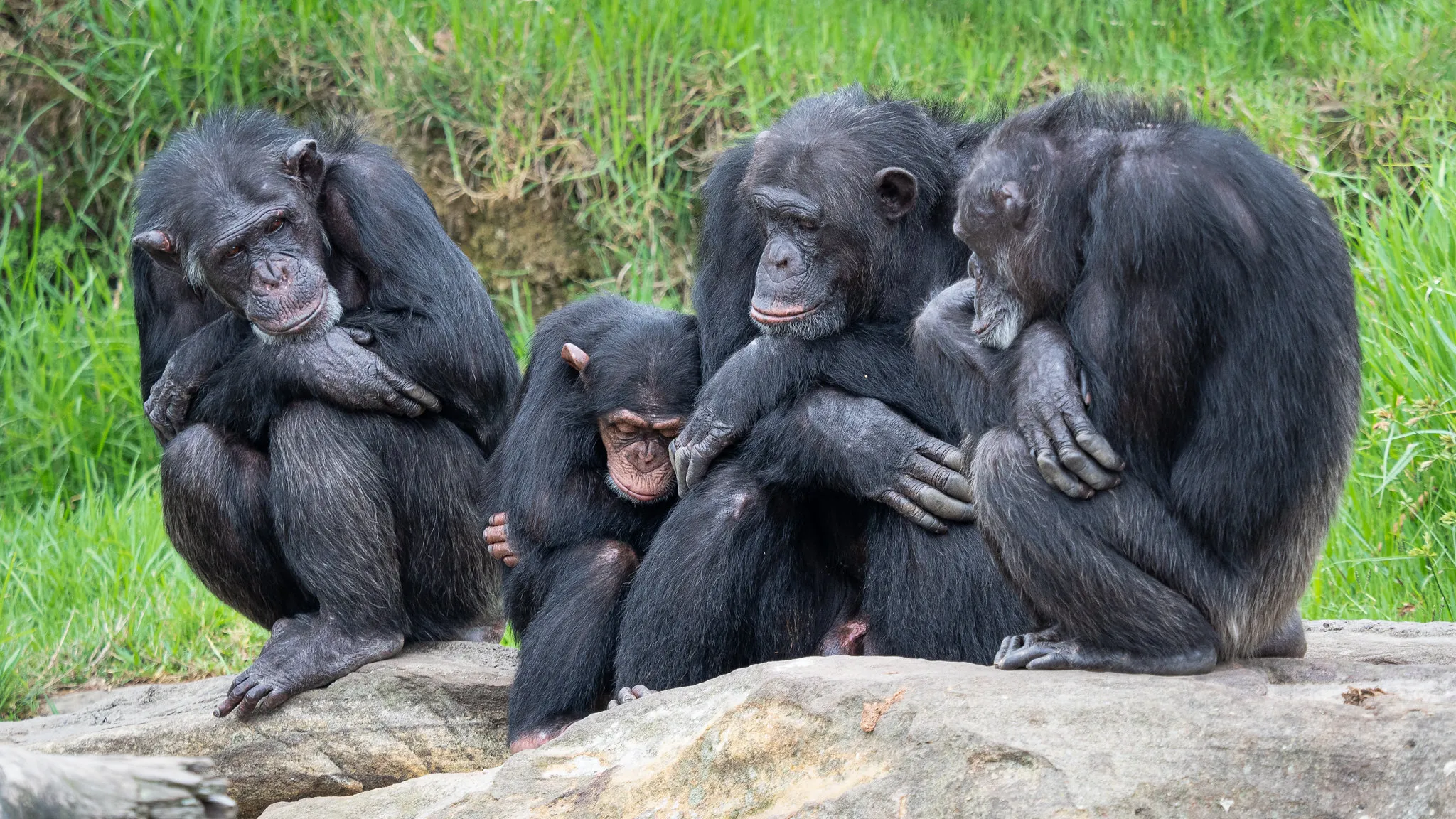
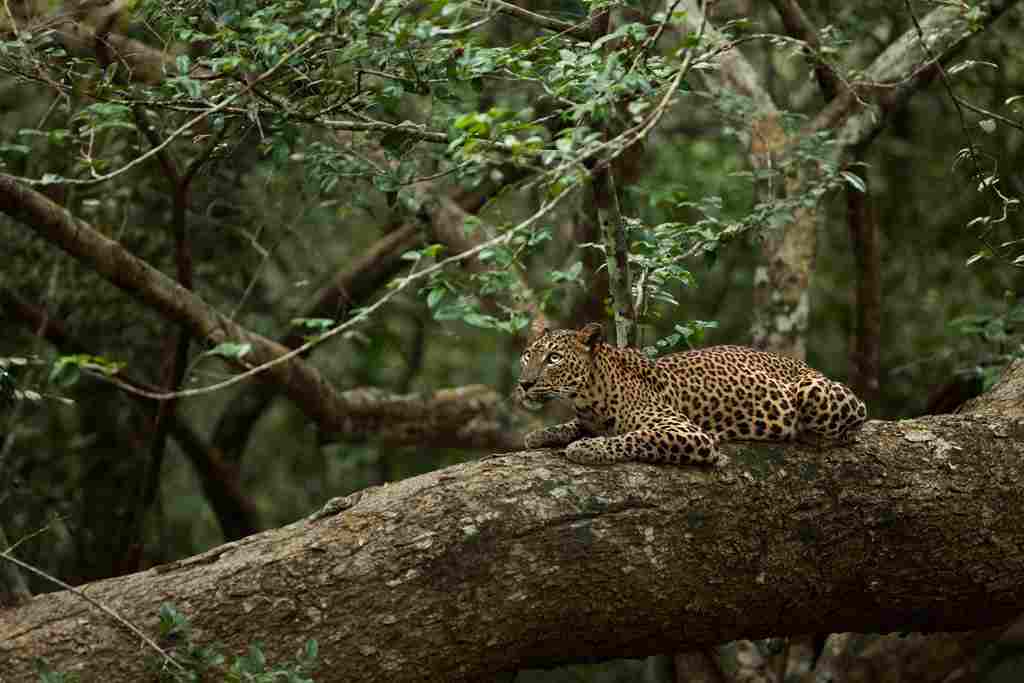
Chimpanzee:
Highly social, living in communities led by an alpha male.
Complex social structures, with grooming and communication playing crucial roles.
Leopard:
Mostly solitary, with occasional social interactions during mating or when raising offspring.
Tend to be territorial and avoid confrontations.
Comparison:
Chimpanzees exhibit intricate social structures, while leopards are predominantly solitary.
Ecological Implications:
Social behaviors impact community dynamics, cooperation, and reproductive success, influencing the ecological roles of each species.
18. Mode of Reproduction:
Chimpanzee:
Polygamous mating system with dominant males having mating privileges.
Gestation period of about 230 days, and females give birth to a single offspring.
Leopard:
Solitary and polygamous mating system.
Gestation period of approximately 90 to 105 days, with usually two to three cubs born.
Comparison:
While both species exhibit polygamous mating, the gestation period and litter size differ significantly.
Ecological Implications:
Reproductive strategies influence population dynamics and genetic diversity within their respective ecosystems.
19. Parental Behavior:
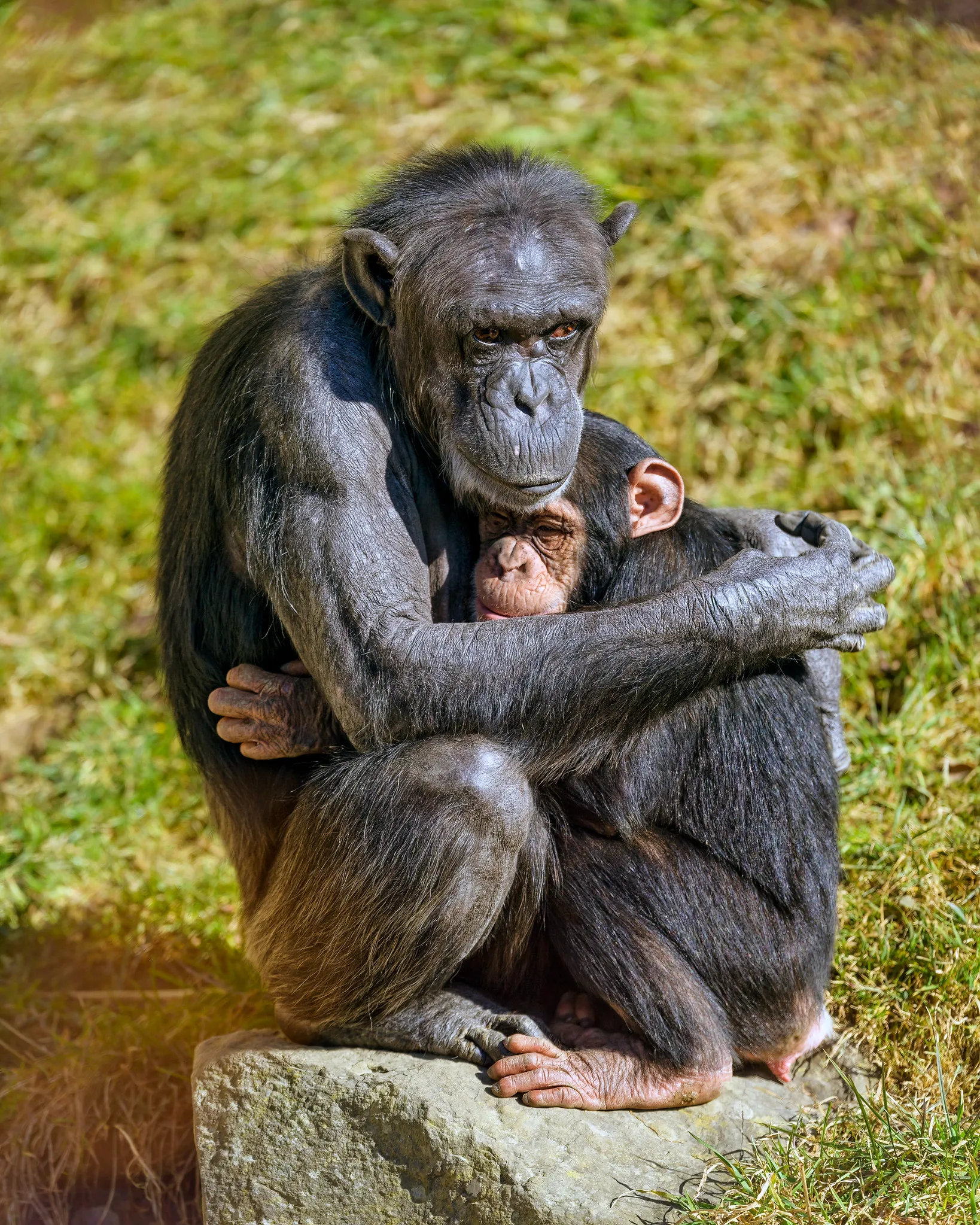
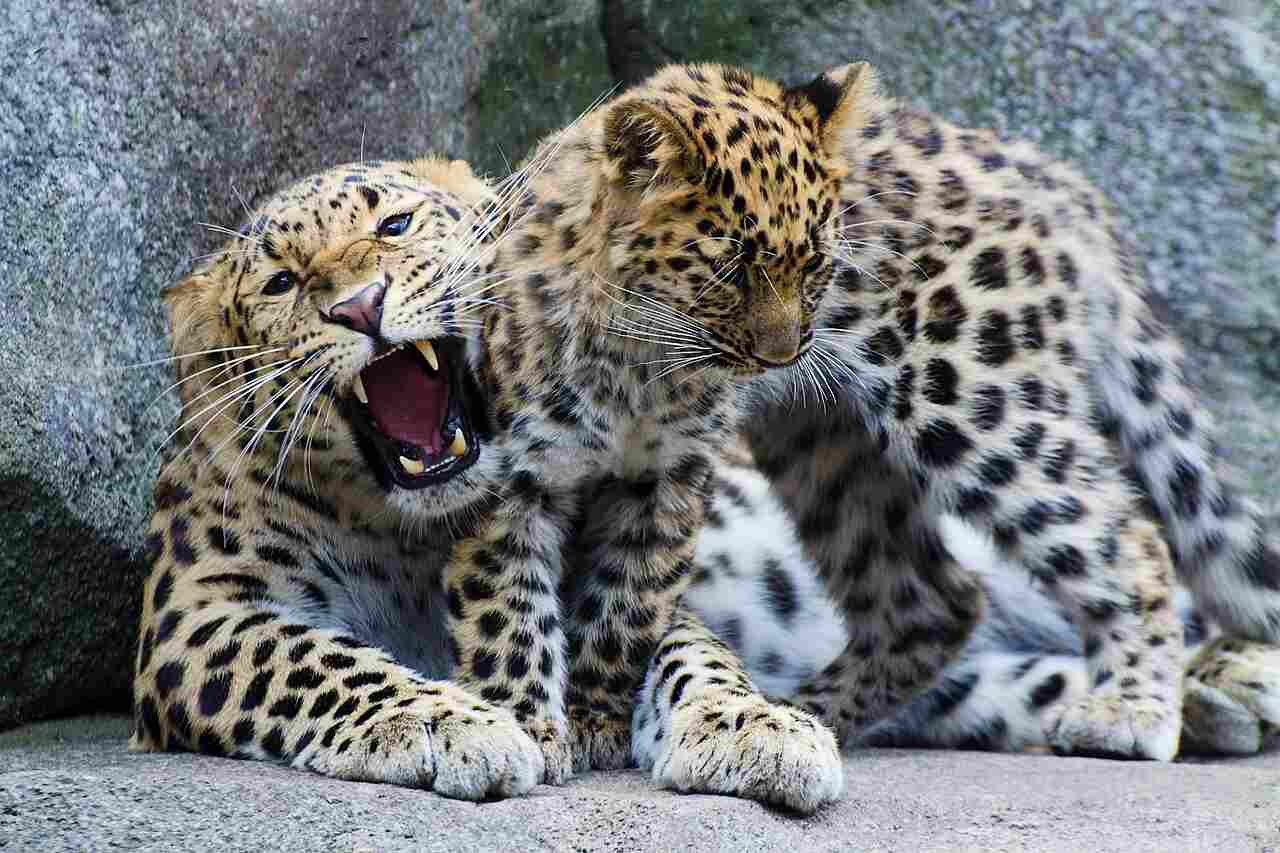
Chimpanzee:
Intensive maternal care with strong bonds between mothers and offspring.
Offspring are dependent on their mothers for several years.
Leopard:
Protective of cubs during early life, with mothers often hiding them in secluded locations.
Cubs learn hunting skills from the mother before becoming independent.
Comparison:
Chimpanzees demonstrate longer maternal care and a more extended period of dependence compared to leopards.
Ecological Implications:
Parental behavior influences survival rates of offspring and contributes to the species’ overall reproductive success.
20. Proximity to Human-Inhabited Areas:
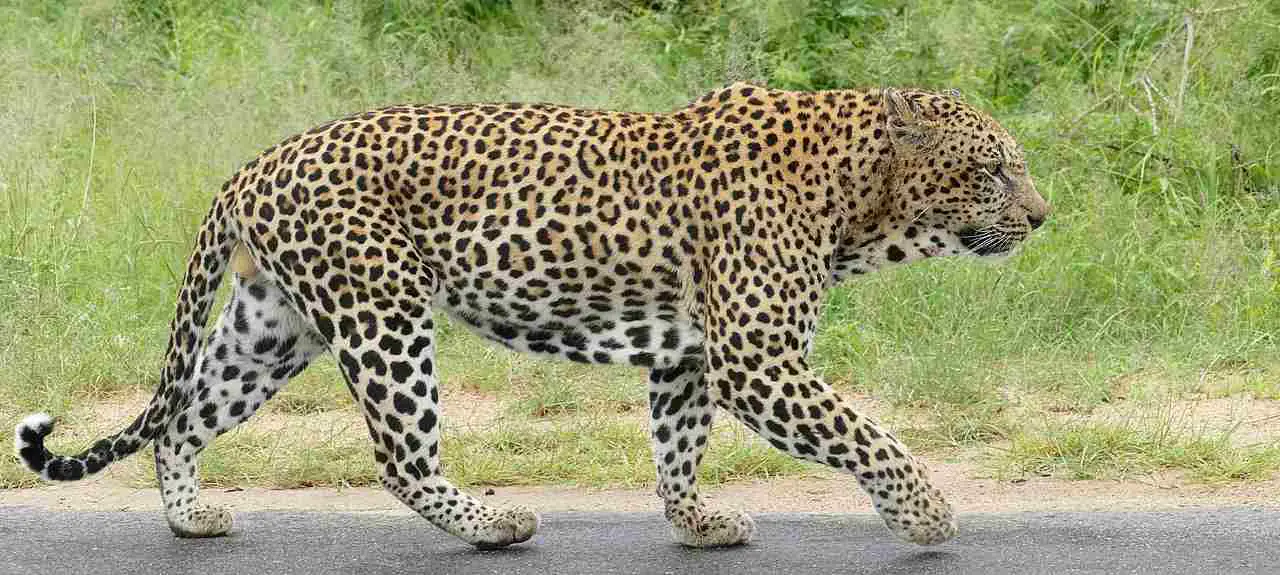
Chimpanzee:
Found in forested areas close to human settlements.
Face threats from habitat loss, hunting, and diseases transmitted by humans.
Leopard:
Can adapt to a variety of habitats, including peri-urban and agricultural landscapes.
Human-leopard conflicts may arise due to livestock predation.
Comparison:
Both species can come into proximity with human-inhabited areas, leading to potential conflicts and conservation challenges.
Ecological Implications:
Human-wildlife interactions impact the conservation status and well-being of these species, necessitating conservation strategies.
21. Behavior Toward Humans:

Chimpanzee:
Generally wary of humans but may become accustomed to their presence.
Rare cases of aggression, especially if provoked or if their habitat is threatened.
Leopard:
Typically elusive and avoids human contact.
Instances of conflicts may occur, especially in areas where habitats overlap.
Comparison:
Both species generally avoid direct confrontation with humans, but chimpanzees may show more curiosity or aggression if provoked.
Ecological Implications:
Understanding species’ behavior toward humans is crucial for managing potential conflicts and implementing effective conservation measures.
22. Danger Posed to Humans:
Chimpanzee:
Generally not considered a significant threat, but can display aggressive behavior if provoked or feels threatened.
Rare cases of attacks on humans, particularly in situations where the animals have lost their natural fear.
Leopard:
Generally avoids humans, but conflicts may arise in areas with habitat overlap.
Instances of attacks on humans, often associated with territorial disputes or accidental encounters.
Comparison:
While both species may pose dangers in specific circumstances, leopards are generally more elusive and pose a greater risk due to their predatory nature.
Ecological Implications:
Understanding potential risks is crucial for developing effective strategies to mitigate human-wildlife conflicts and ensure coexistence.
23. Associated Precautions:
Chimpanzee:
Encourage responsible tourism practices to minimize disturbance.
Implement measures to protect natural habitats and reduce habitat loss.
Promote education and awareness about chimpanzee behavior to prevent negative interactions.
Leopard:
Implement measures to avoid attracting leopards to human-inhabited areas.
Develop and enforce regulations to prevent illegal hunting or poaching.
Educate communities on coexisting with leopards and implementing safety measures.
Comparison:
Precautions for both species involve a combination of habitat protection, education, and responsible practices to minimize potential conflicts.
Ecological Implications:
Implementing precautions is vital for maintaining ecological balance, conserving species, and ensuring the safety of both humans and wildlife.
24. Conservation Status:
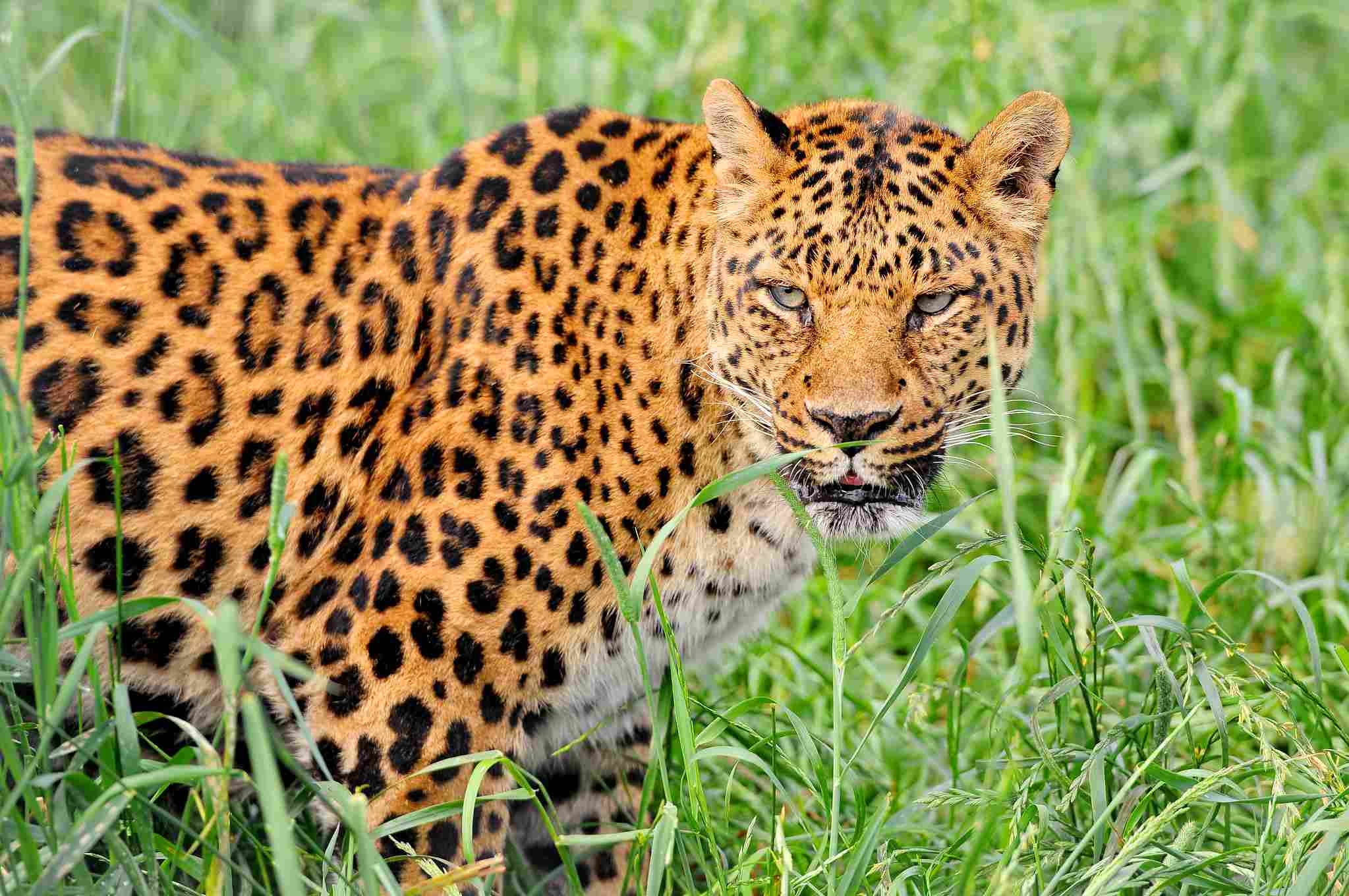
Chimpanzee:
Conservation status varies among subspecies.
Generally, chimpanzees are listed as endangered due to habitat loss, hunting, and diseases.
Leopard:
Conservation status varies by region.
Listed as near-threatened, facing habitat loss, poaching, and retaliatory killings in response to human-wildlife conflicts.
Comparison:
Both species face conservation challenges, with habitat loss and human-wildlife conflicts contributing to their vulnerable statuses.
Ecological Implications:
Conservation efforts are crucial to maintaining biodiversity and preserving the ecological roles these species play in their respective habitats.
*Summary of Comparison
Taxonomy:
Chimpanzee: Primates, Hominidae family.
Leopard: Carnivora order, Felidae family.
Appearance:
Chimpanzee: Coarse black hair, expressive face.
Leopard: Sleek, golden-yellow coat with rosettes.
Size:
Chimpanzee: 3.3-5.6 feet tall (males).
Leopard: 3.9-6.2 feet long.
Weight:
Chimpanzee: 90-150 pounds (males).
Leopard: 66-176 pounds.
Dentition and Bite Force (PSI):
Chimpanzee: 1,200 PSI.
Leopard: 600-700 PSI.
Physical Offensive Advantages:
Chimpanzee: Strength, agility, tool use.
Leopard: Sharp claws, powerful jaw, stealth.
Physical Defensive Advantages:
Chimpanzee: Climbing, group cooperation.
Leopard: Retractable claws, tree-climbing.
Speed:
Chimpanzee: 25 km/h.
Leopard: 58 km/h.
Agility:
Chimpanzee: Tree-climbing, swift movements.
Leopard: Agile climbing, swift hunting.
Senses:
Chimpanzee: Balanced vision, hearing, touch.
Leopard: Night vision, acute smell, hearing.
Overall Physical Capacity:
Chimpanzee: Versatility, tool usage, cooperation.
Leopard: Stealth, strength, sensory perception.
Habitat Preference(s) and Geographic Region:
Chimpanzee: Tropical rainforests, Africa.
Leopard: Various habitats, Africa, Asia.
Tracks:
Chimpanzee: Hand-like footprints, knuckle-walking.
Leopard: Paw prints, retractable claws.
Lifespan:
Chimpanzee: 40-60 years.
Leopard: 12-17 years.
Mode of Feeding:
Chimpanzee: Omnivorous, tool use.
Leopard: Carnivorous, ambush tactics.
Intelligence:
Chimpanzee: Advanced problem-solving, tool use.
Leopard: Cunning hunting techniques.
Social Behavior:
Chimpanzee: Highly social, complex structure.
Leopard: Mostly solitary, territorial.
Mode of Reproduction:
Chimpanzee: Polygamous, gestation 230 days.
Leopard: Polygamous, gestation 90-105 days.
Parental Behavior:
Chimpanzee: Intensive maternal care.
Leopard: Protective, cubs learn hunting.
Proximity to Human-Inhabited Areas:
Chimpanzee: Forests near settlements.
Leopard: Adaptable, peri-urban areas.
Behavior Toward Humans:
Chimpanzee: Generally wary, rare aggression.
Leopard: Elusive, avoids direct contact.
Danger Posed to Humans:
Chimpanzee: Rare aggression if provoked.
Leopard: Rare attacks, territorial disputes.
Associated Precautions:
Both involve habitat protection, education, and responsible practices.
Conservation Status:
Chimpanzee: Endangered.
Leopard: Near-threatened.
Conclusion
-Similarities:
Both species are integral to their ecosystems, playing crucial roles in maintaining ecological balance.
Face conservation threats, including habitat loss and human-wildlife conflicts.
Share proximity to human-inhabited areas, necessitating coexistence strategies.
-Differences:
Divergent social structures, with chimpanzees exhibiting complex group dynamics and leopards being predominantly solitary.
Varied ecological roles, with chimpanzees influencing plant dispersal and community structure, while leopards regulate prey populations.
Different conservation statuses, reflecting the specific challenges each species faces in their respective environments.

